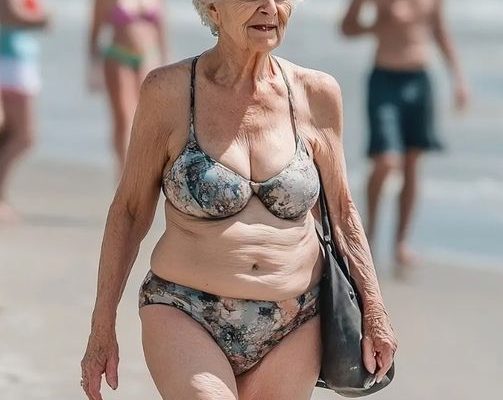Every summer, like clockwork, the media explodes with images of women on vacation, their every move scrutinized. Are they wearing bikinis? Are they “too old” or “too big”? Are they too comfortable in their own skin? Cue the judgmental comments: “Why is she wearing a bikini at her age?” or “Shouldn’t she be in a one-piece?” Sadly, this routine has become an unfortunate hallmark of summer. From paparazzi snapshots to harsh headlines, this shaming reinforces unrealistic beauty standards. But why is this so common, and what does it say about society’s attitude toward women’s bodies?

The Annual Spectacle of Body Shaming
Let’s call it what it is: a spectacle. Each summer, certain media outlets seem to revel in parading female celebrities in swimsuits. These aren’t just casual photos; they are used as ammunition. Paparazzi capture women in unguarded moments—adjusting a towel, bending over, or simply relaxing. Often, these images are snapped from angles that emphasize imperfections, and if the photo isn’t “juicy” enough, editing can make it seem worse.
But why does this kind of imagery gain so much attention? Why is there such a public appetite for criticizing women, especially those who have dared to age or don’t fit into a size eight, for just living their lives?
Why Women’s Swimwear Choices Are Everyone’s Business
For a long time, women’s bodies have been treated like public property. When a famous woman wears a bikini, it’s not just about fashion—it’s a statement, and the world is ready to critique. Society expects women to fit a certain mold and age gracefully—if at all. Stepping outside these invisible boundaries often leads to ridicule and harsh judgment.
The Pressure of the “Bikini Body”
Every summer, we’re hit with messages about getting that perfect “bikini body.” The implication is clear: only certain types of bodies “deserve” to wear a bikini. If you don’t fit the mold, cover up. This fixation has given rise to an entire industry of fad diets, intense workout plans, and wellness products targeted toward women. The underlying message is that women must constantly work to meet society’s beauty standards or risk being seen as “unworthy” of summer fun.
The Double Standard: Age and the Bikini
While some attention is given to men’s bodies in the summer, the focus is overwhelmingly on women, particularly older women. Male celebrities can age, gain weight, or go gray, and they’re still often celebrated. But if a woman shows any signs of aging—especially in a bikini—the narrative changes. The media often uses flattery as a disguise to encourage readers to sneer at women who dare to age in public.
Paparazzi: Turning Private Moments Into Public Shame
The role of paparazzi in this annual ritual can’t be overlooked. Their long lenses don’t seek to capture beauty; they look for mundane moments that humanize these celebrities. When a woman is caught simply existing—applying sunscreen, relaxing on the beach—it becomes an opportunity for humiliation. The public is then invited to gawk and judge.
Capturing Women in Vulnerable Moments
These images are designed to be unflattering. A woman bending over, applying sunscreen, or not minding her posture becomes a punchline. Society has turned ordinary beach activities into moments ripe for public ridicule, as though women on vacation must always be “camera-ready.”
Public Humiliation as Entertainment
The troubling part of this yearly shaming ritual is that it entertains people. There’s an underlying cruelty that society has become desensitized to. This cycle of “shock, shame, and share” has made it normal to treat women’s bodies as fodder for entertainment, all while ignoring the real emotional impact on those being shamed.
The Psychological Impact of Body Shaming
Research shows that exposure to body-shaming content can negatively affect mental health, leading to lower self-esteem and body dissatisfaction. This doesn’t just affect celebrities; it impacts all women. When the media sets a narrow standard for who can confidently wear a bikini, it sends a harmful message that many internalize, causing feelings of inadequacy, even in private settings.
Reclaiming the Bikini: A Shift in Perspective
Fortunately, the backlash against these harmful narratives is growing. Movements for body positivity and inclusivity are encouraging more women to embrace their bodies, regardless of size or age. Women are beginning to reject the idea that they need to hide or “fix” themselves to participate in summer fun.
Conclusion: Ending the Shaming Cycle
The annual summer spectacle of body shaming is more than just a tabloid trend—it reflects a society that continues to impose narrow expectations on women’s bodies. The irony is that these women, often caught in unguarded moments, are the most relatable. They’re not on a red carpet; they’re just relaxing like anyone else. It’s time to let them be. Instead of fueling the fire of judgment, we need to recognize that beauty is diverse, age is irrelevant, and every body is worthy of celebration. This summer, let’s change the narrative: every woman deserves to wear what she pleases and enjoy the sun free from judgment.



